Learning how to play scales on piano can be fun, especially once you get them under your fingers. Some people shy away from piano scales thinking they’re boring or difficult. However, being able to play up and down on the piano with speed and agility is a great skill to have. We’ll look at some beginner friendly scales, how to learn scales on piano and the benefits of being in the habit of practicing them daily. Let’s get started!

What are piano scales?
Scales are a sequence of notes played consecutively, usually ascending or descending by step. The starting note of a scale is called the root and matches the name of the scale. There are different types of scales, the ones we use most often are major and minor scales. They make up most of the music we listen to. Scales can be thought of as the building blocks of musical language. Musicians use scales like vocabulary both to create music and understand it in its written form. A bit of scale knowledge goes a long way to help you play a lot of music with an increased depth of understanding and technical freedom.
Basic scale building blocks
Most scales are built from patterns of whole steps and half steps. Before we get started it’s a good idea to be familiar with these intervals and how they look on piano.

Half step (H): The smallest distance between two adjacent keys on the piano, whether white or black. (For instance, C to C# or F to E). There is no key in between these two steps.
Whole step (W): Equal to two half steps, moving two keys in either direction. (For instance, C to D or G to A). There is a note in between the two keys of a whole step.
Types of piano scales
There are lots of different types of scales on piano. In this article we will cover major, minor and their variations, the chromatic scale, pentatonics and the whole tone scale. Each type is built from a combination of whole and half steps, and occasionally a larger jump. Due to these patterns each scale has its own character and recognisable quality. Let’s look at each type in detail.
Major scales
Major scales are the basis of western harmony and have a bright and happy sound. We’ll begin with the C major scale. Scales have two distinguishers, their root and their quality. In the C major scale, the root is C, therefore we begin on the note C.
The following diagram shows you the pattern of half and whole steps for a major scale:
W-W-H-W-W-W-H
In the key of C this pattern gives us the notes C – D – E – F – G – A – B building from the root (C). This pattern finally arrives on C, 8 notes higher. This is called a one octave major scale, you can keep following this pattern to cover more octaves if you like.

It is important to follow the correct fingerings with any of the major scales on piano. The fingering pattern for C major is:
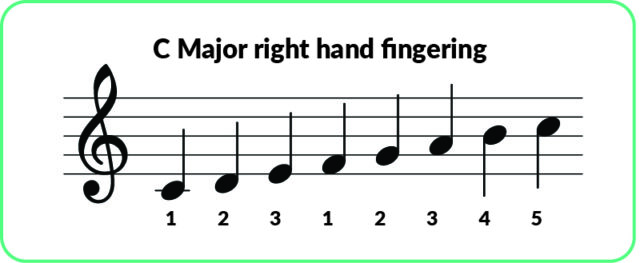
Below is the example of D major. Notice that the step pattern of whole steps and half steps is the same as C major, however this time there are two sharps (black keys). This key signature (the two sharps) ensures the pattern of whole and half steps remains the same when starting from the root note, D.
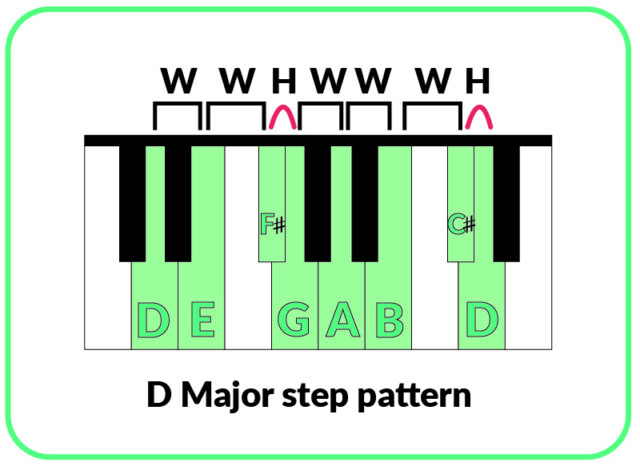
Always check the fingering pattern for any new scale you learn to make sure you are practicing with proper technique.
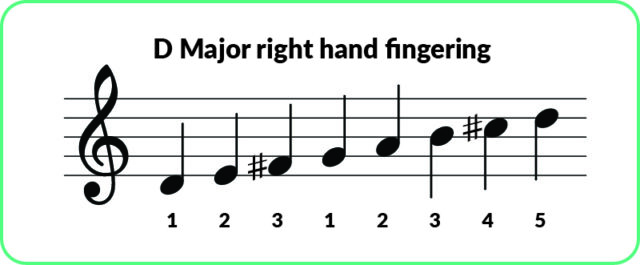
Major piano scales chart:
Want a guide to all major scales? Download our helpful major scales chart and get learning now!

Minor scales
While major scales have a happy sound to them, minor scales can sound comparatively mysterious, sad or even exotic. Each major key shares a key signature with a minor key. These are called ‘relative keys’. Any major’s minor relative is three half-steps below the root note of the major key e.g. C major to A minor .
The chart below shows all of the 12 related major and minor keys:
| Key signature | Major Key | Relative Minor Key |
|---|---|---|
| No sharps or flats | C major | A minor |
| 1 sharp | G major | E minor |
| 2 sharps | D major | B minor |
| 3 sharps | A major | F# minor |
| 4 sharps | E major | C# minor |
| 5 sharps/7 flats | B major/C♭ major | G minor |
| 6 sharps/6 flats | F# major/G♭ major | E♭ minor/D# minor |
| 5 flats/7 sharps | D♭major/C# major | B♭ minor |
| 4 flats | A♭ major | F minor |
| 3 flats | E♭ major | C minor |
| 2 flats | B♭ major | G minor |
| 1 flat | F major | D minor |
There are three different types of minor scale: natural, harmonic and melodic. Each of these scales has a distinctly characteristic sound. Let’s take a look.
Natural minor scale
A natural minor scale shares the same notes as its relative major; it just starts on a different root. The construction of a natural minor scale looks like this:
W – H – W – W – H – W – W

The natural minor scale can also be called the Aeolian mode.
Natural minor piano scales chart:
Want a guide to all natural minor scales? Download our helpful natural minor scales chart and get practicing now!

Harmonic minor scale
The harmonic minor scale is notable for its raised 7th degree which does not appear in the key signature. This raised 7th means there is an interval of 3 half steps between the 6th and 7th note. The construction looks like this:
W – H – W – W – H – 3 Half Steps – H
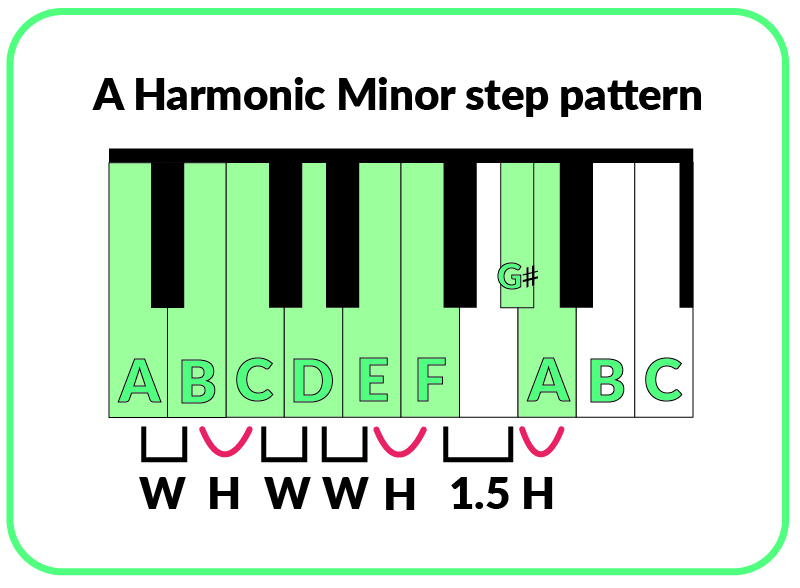
Harmonic minor scale piano chart:
Want a guide to all harmonic minor scales? Download our helpful harmonic minor scales chart!

Melodic minor scale
The melodic minor scale is a variation of the natural minor scale. Ascending, it raises both the 6th and 7th degrees by a half step. In classical theory, when descending it reverts to the natural minor form, conforming to the key signature, exactly like the natural minor scale.
It is constructed like this:
- Ascending: R–W–H–W–W–W–W–H
- Descending: R–W–W–H–W–W–H–W
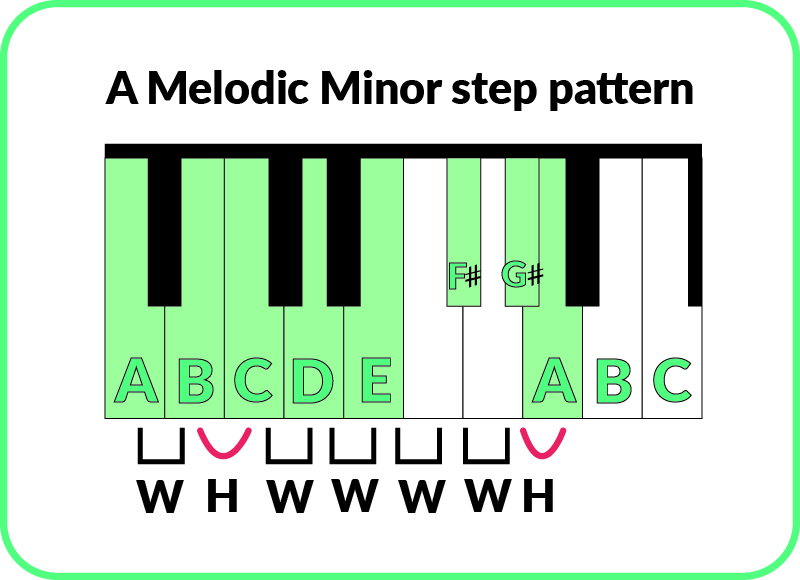
Melodic minor scale piano chart:
Want a guide to all melodic minor scales? Download our helpful melodic minor scales chart and get learning now!

Chromatic scales
A chromatic scale does not conform to any specific key. Chromatic scales can start on any note and include every note, black and white. The pattern for this scale is all half steps.

There is a specific fingering pattern to use for the chromatic. Here is the fingering and note layout for each hand:

Notice how the second finger is used when you need to navigate consecutive white keys, B-C and E-F.
Pentatonic scales
Pentatonic scales on piano consist of 5 notes, so they are easy to find and play as they fall under the fingers in a very organic way. Many blues, jazz, rock and pop songs employ this scale as they’re a great for improvisation.
The major pentatonic:
The major pentatonic is structured like this:
R – W – W – 3 Half-Steps – W

The C major pentatonic scale is spelled:
C – D – E – G – A
Try it out and you’ll see it’s easy to play. Notice how a major pentatonic is scale degrees 1 – 2 – 3 – 5 and 6 of a major scale.
Major pentatonic scale piano chart:
Check out this handy chart of all of the major pentatonic scales and their fingerings.
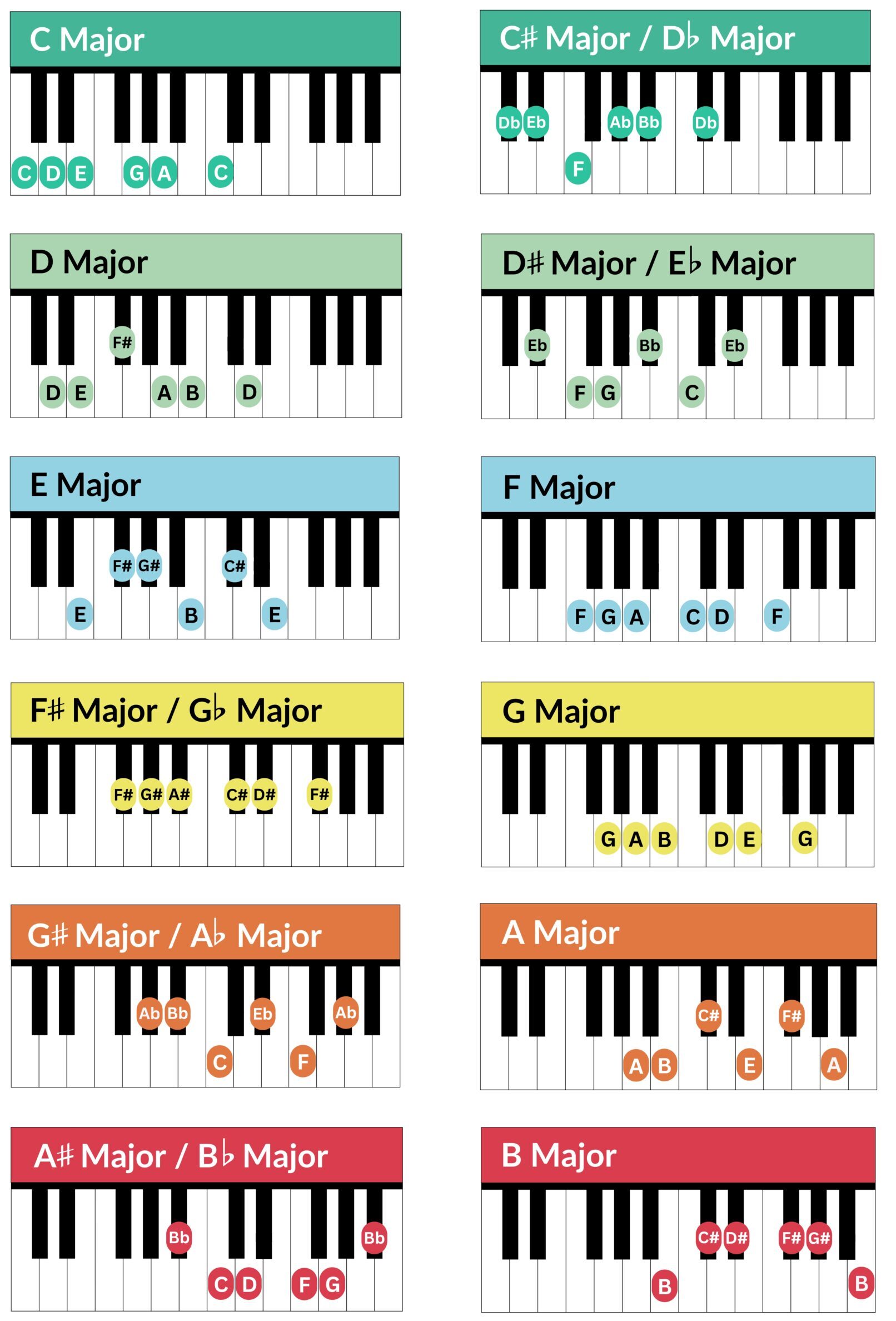
The minor pentatonic:
The minor pentatonic scale pattern is:
R – 3 Half-Steps – W – W – 3 Half-Steps – W

The C minor pentatonic scale is spelled C – E♭ – F – G – B♭. Notice how a minor pentatonic is scale degrees 1 – 3 – 4 – 5 and 7 of the natural minor scale.
Minor pentatonic scale piano chart:
Check out this handy chart of all of the minor pentatonic scales and their fingerings.
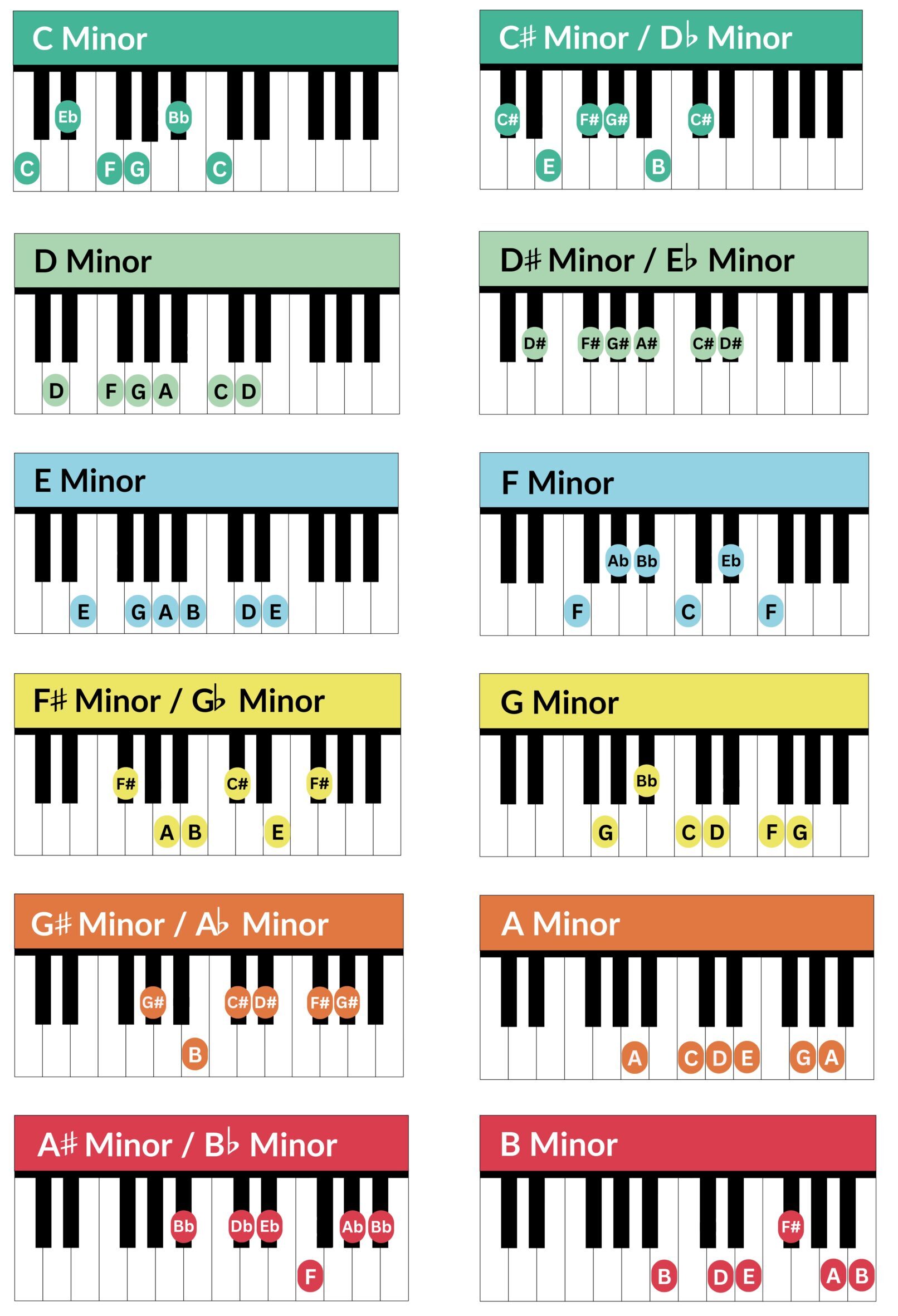
Whole tone scale
The whole tone scale sounds ethereal and romantic. As the name implies, the whole tone scale is built in a series of whole steps like this:
W-W-W-W-W-W

It is a six note scale. The whole tone scale beginning on C is spelled
C – D – E – F♯ – G♯ – A♯ – C
Claude Debussy used this scale frequently in his music. Listen to La Fille Aux Cheveux De Lin to get the sense of wonder that this scale conjures. You can try the lesson here with Skoove.
Whole tone scale piano chart:
Check out this handy chart of all of the whole tone scales and their fingerings.
Top tips for practicing piano scales
Knowing scales will give you a good understanding of key signatures and help with reading piano sheet music. Once you have learned your scales, make practicing them part of your daily routine. Knowing how to practice scales on piano can be just as important as the scale knowledge itself. Let’s tackle some top tips for scale practice and mastery.
- Hand position: The most important thing for beginners when learning piano scales is to use a good hand position.The correct piano hand position is hovering above the keys with the fingers curved slightly downwards towards the keys. There should be a space between your palm and the piano keys.
- Fingering: Be sure you learn the correct fingering for each note of scale using fluid and smooth motion, especially when you cross over fingers.
- Playing hands together: Playing piano scales hands together can feel tricky at first. Remember to go very slowly, think one step ahead and keep your hands relaxed.
- Go slow: Take your scales slowly and in time, especially at first. This will make sure you internalise the scale correctly and concentrate on your fingering and posture.
- Practice in chunks: Be sure to practice your scales in manageable small chunks. Take your time to perfect that tricky crossover or difficult fingering. You don’t have to practice the whole scale at once.
- Contrary motion: Once you have mastered playing with both hands at the same time you can start playing with them going in different directions. This is a great next step in hand independence and coordination.
- Practice with Skoove: Be sure to make the most of Skoove throughout your piano learning journey. Use our vast variety of lessons and songs to guide you as you master your scales.
Piano scales generator
This piano scales generator from Pianoworld is a handy tool to learn scales. It is interactive and easy to use. If you are reading this from a mobile device, rotate it to display the tool in full width.
1. Click on “Scale”
2. Choose the “Root” of the scale
3. Choose the “Type” (major, minor, etc.)
4. Click “Display”
* You can do the same with scales.
** You can invert chords and scales
Learn your scales with Skoove!
Exploring new scales and patterns can lead to exciting musical discoveries. You might try a scale that evokes sadness, sunlight, outer space or something colourful like the chromatic scale. As you can see, every scale adds something new to your musical vocabulary. You can experiment by combining these scales with basic piano chords and improvisations.
Composers and pianists of all levels practice scales because they unlock new keys and ways to express yourself. To further what you have learned in this article and deepen your musical expression, consider lessons using the piano learning app Skoove with a free trial. Happy practicing!
Author of this blog post
Vicki Young
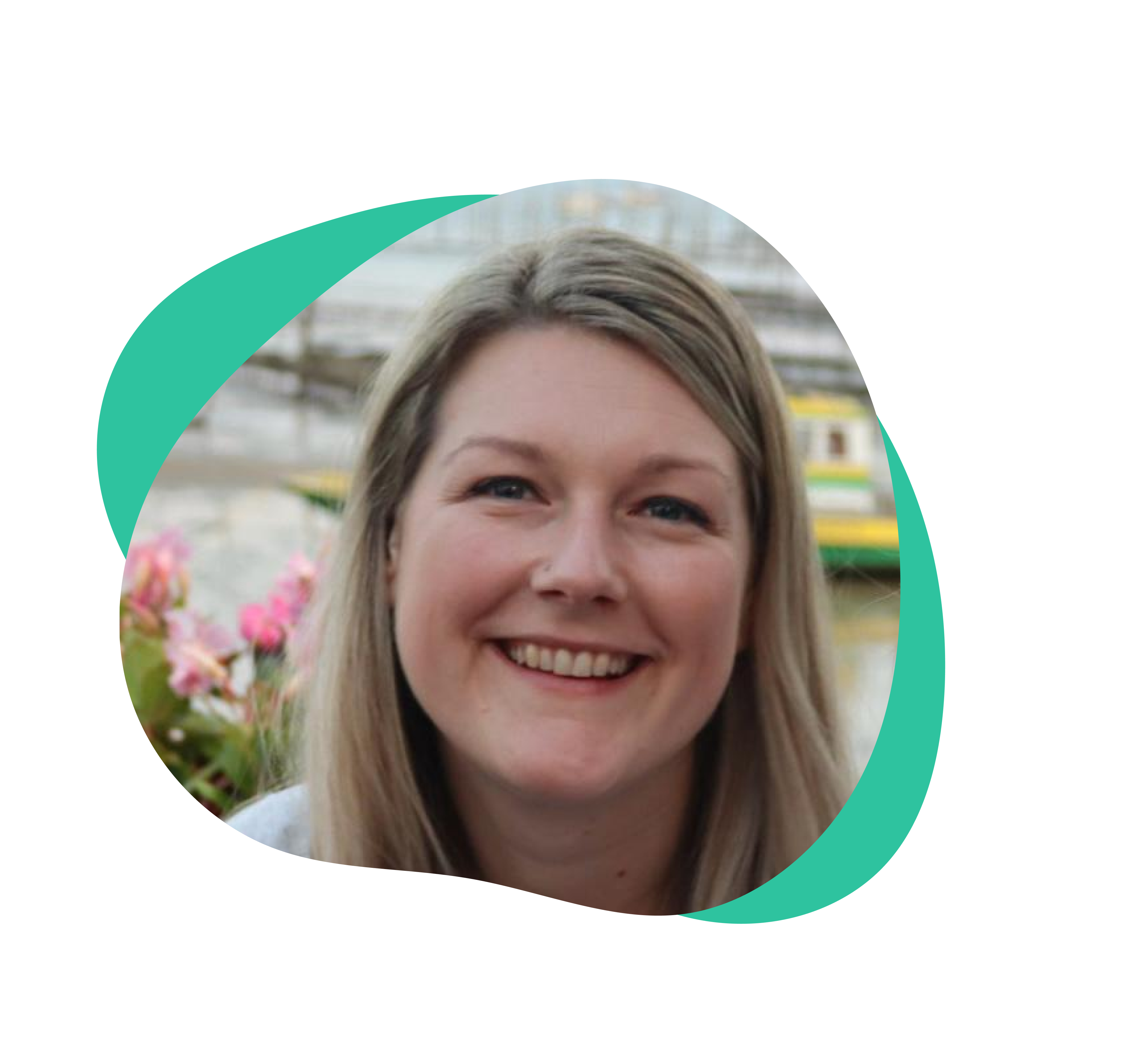
Vicki Young is a pianist and singer with a degree in Music from the University of Sheffield. She lives in London, UK with her husband and son. Vicki is a communications and marketing freelancer who has worked with a range of organizations across the music and charity sectors.
Published by the Skoove team















